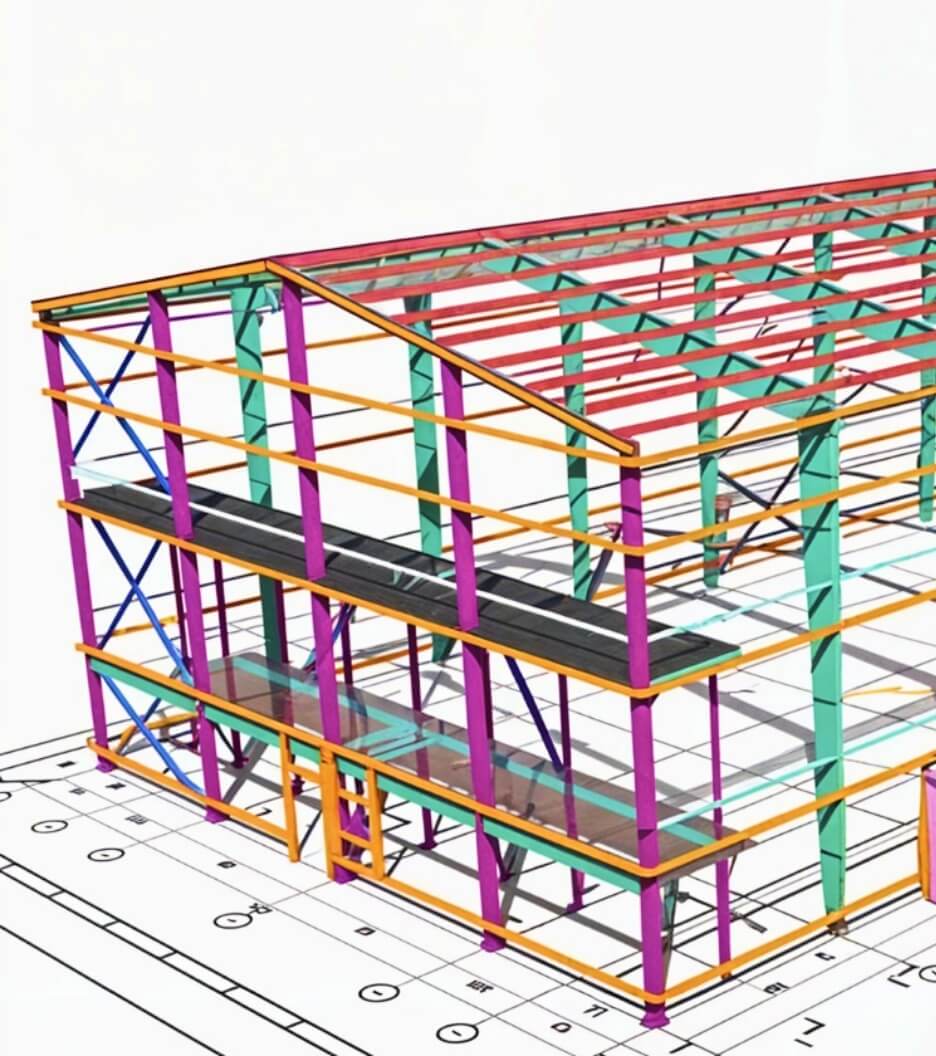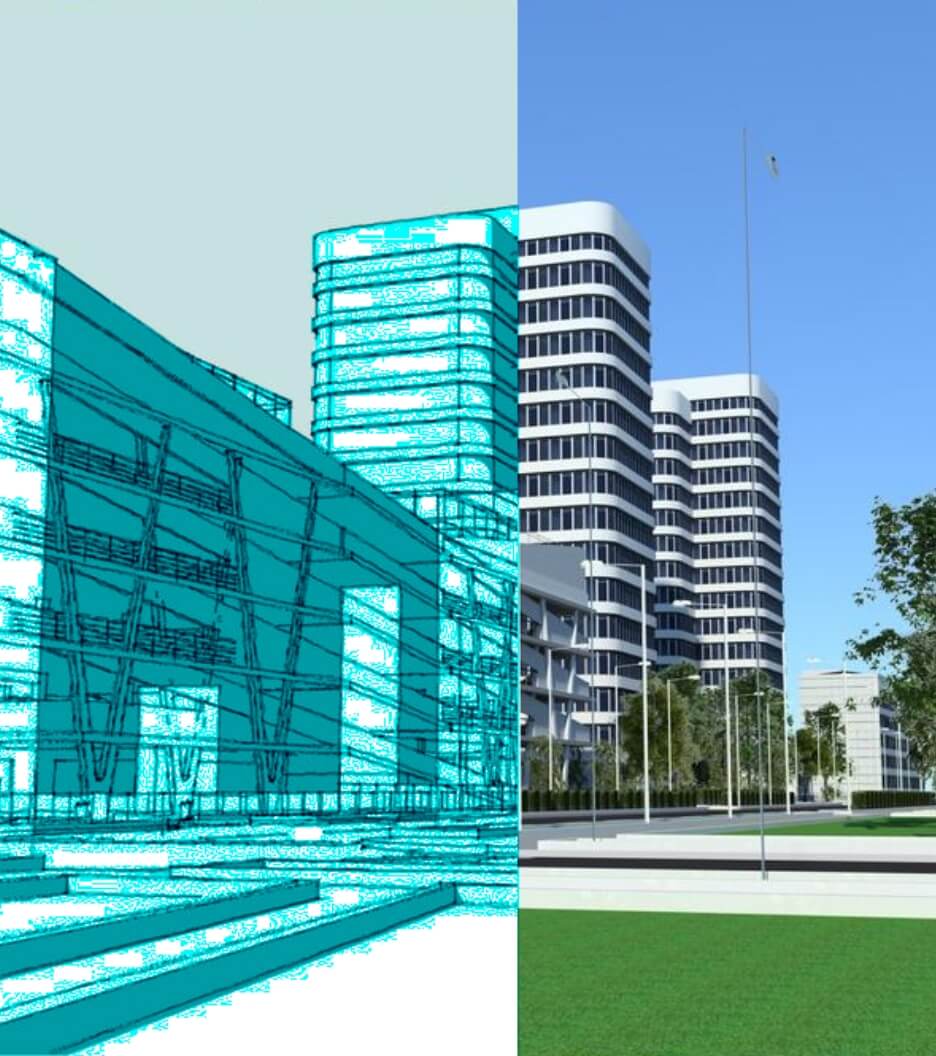 Rahul Dogra
Rahul DograRole of BIM in Enhancing the Oil and Gas Industry
 Rahul Dogra
Rahul Dogra
Send Us Your Requirement
Continuous upliftment in the economy has increased the competition by adopting new methods, innovations and tools and technology that can be useful. Similarly in AEC, there is no doubt that building information modeling has been a game changer in the sector. Today, this groundbreaking technology has become a mandatory technology that has enhanced the working approach, efficiency of professionals, and accuracy of every AEC project. With efficient technology and continuous advancements, it has been a boon for architectural firms to provide safe and exquisite buildings for occupants to stay in. Moreover, the supreme working approach with a long list of benefits also offers design variations for architects, designers, and engineers to address environmental concerns, provide sustainability options, and maintain long-lasting facilities. As compared to earlier days in the architecture and construction industry, one of the most common challenges was the lack of construction documentation, clarity in the process, and mismanagement of resources that almost crossed the project budget.
This ultimately resulted in the increased project’s budget, design inefficiency, miscommunication among the professionals, delay in completion, costly rework, and more. Thankfully, technological advancements and the adoption of BIM architectural services have proved beneficial and indispensable tools in the architecture, engineering, and construction industry. The adoption of BIM technology is a game changer for professionals, offering a 3D digital representation of the physical and functional characteristics of the building. However, this innovation extends its capabilities to the construction and architecture industry, reaching the oil and gas sector.
Oil and gas are two of the most crucial parts of the global economy, providing energy and fuel to other industries such as transportation and helping households. The vast sector is involved in various production, refining, distribution of crude oil, natural gas, exports, exploration of gas and oil reserves, and more. As a matter of fact, the oil and gas industry is typically a technology-driven sector, and over the last two decades, it has used digital modeling. The oil and gas industry is known for its complexity, vast infrastructure, safety protocols, and operational cost. This is why 3D BIM modeling services are crucial in the advanced generation.
Elevate Oil and Gas Infrastructure with 3D BIM Modeling
Contact Us
It is astonishing to know that BIM goes beyond the physical and functional characteristics of the facility and helps in facility management, safety precautions, and efficiency in the infrastructure. Since the role of BIM is to provide a digital 3D solution, the oil and gas industry leverages groundbreaking technology for infrastructure development, where efficiency and safety are non-negotiable factors. Let’s understand in detail how structural BIM services are one of the crucial parts of the oil and gas industry.
Brief About Oil and Gas Industry Landscape
The oil and gas industry is an old sector in the global economy and is considered one of the most crucial aspects as well. The significant sector is complex and capital intensive, where safety and efficiency are paramount even in the extensive infrastructures. In the oil and gas landscape, the facility, or refinery factories, requires meticulous planning and execution as safety is one factor that reduces the potential chances of any mishappenings. Traditionally, in the earlier days, infrastructure development relied on 2D drawings, which has led to errors, delays, and inefficiencies.
Thankfully, technological advancement has resulted in efficient and novel paths where industries like oil and gas build safe and efficient infrastructure and all the functionalities. This is where 2D CAD to BIM conversion took place after the inception and quick adoption of 3D BIM technology. BIM for oil and gas offers comprehensive solutions to aid the vast infrastructure challenge for safety, efficiency, and accuracy while helping to bring a holistic approach to project management and facility management. Let’s understand what building information modeling is in detail.
Understanding BIM Services: An Overview
As technology has been growing continuously in architecture and construction, a drastic shift in the working approach happened with the inception of BIM. This groundbreaking technology not only improved the level of construction but also gave a competitive edge, new doors of opportunity, a new curve of creativity, a holistic construction approach, and many more. BIM technology in today’s era goes beyond the digital representation of physical and functional components of the facility; it also helps to improve maintenance, infrastructure safety, data management, and BIM level of detail.
The 3D BIM modeling services encompass highly detailed data that includes geometry, spatial relationships, geographic information, quantities, and building properties. Moreover, the adoption of BIM services in construction projects facilitates better collaboration and communication. With seamless workflow and informed parties results in enhanced decision-making processes, and improved visualization of the project’s entire lifecycle. Regarding the oil and gas industry, structural BIM services help create refineries and vast infrastructure that facilitates safety protocols, building maintenance, and efficiency in the structure. To get more clarity, let’s dive deep into how BIM is beneficial for the oil and gas industry.
BIM Architectural Services for the Oil and Gas Sector
As discussed about BIM technology and the landscape of the oil and gas industry, it is evident that BIM architectural services can be useful. In sectors like oil and gas, infrastructure holds a great deal of significance due to some of the obvious reasons. Building information modeling technology has revolutionized the construction and architecture industry; its benefits and impact can also be leveraged in the oil and gas sector, where infrastructure demands solid, efficient, and safe. With the accurate implementation of structural BIM services, refiners, facilities, and other factories in the oil and gas industry can reach their paramount importance due to the long list of advantages offered by the technology.
As a matter of fact, it is evident that there is a strong facility for storing crude oil, and the process of refining, electrical functionalities, and safety of the same is something non-negotiable in the realm. Moreover, technological advancement has improved how construction projects are designed; BIM also helps enhance oil and gas construction projects. Additionally, a comprehensive suite of solutions offered by 3D BIM modeling services can evidently increase the efficiency, sustainability, and safety as well in the facility.
Nonetheless, facilities in the oil and gas landscape require highly efficient and synchronized MEP components. Thankfully, with MEP BIM services, the functional disciplines and components can be aligned in a comprehensive approach that increases safety and protocols in infrastructure and for workers. Let’s explore some key benefits of BIM technology in oil and gas construction projects.
Key Benefits of BIM Technology in Oil and Gas Construction Projects
Enhanced design and planning
Improved construction management
Increased safety and risk management
Better sustainability
Enhanced design and planning
- Clash detection: Refineries, factories or other oil outlets are built with keen detailing for safety and streamlined workflow. BIM technology can identify potential conflicts in the design between different building components, such as MEP components and structural frameworks. This helps to prevent costly rework, safeguard the area and reduce possible chances of delays.
- Optimized layout: By implementing BIM architectural services for oil and gas factory projects, it is easier to build massive infrastructure with safety precautions. Professionals easily optimize the factory’s layout plan with accurate technical equipment sketch and shop drawings. This process is to ensure efficient space utilization while reducing operational challenges.
- Virtual reality: Before commencing the groundwork, the 3D holistic view of the project is an immersive experience that allows professionals and industrial experts to visualize the design in a 3D environment.
Improved construction management
- Communication and collaboration: One prominent benefit of BIM services is that they facilitate effective communication and collaboration. They provide a centralized platform where experts can be updated about changes to keep everyone on the same page.
- Quality & cost control: Building information modeling offers precise cost estimation, and the BIM level of development helps professionals to oversee quality of process, track the progress of each stage, right allocation of resources and materials.
- Schedule management: BIM is useful for creating a detailed project schedule and identifying possible challenges that may delay progress. This helps complete the infrastructure within the desired timeline.
Increased safety and risk management
- Hazard identification: Oil and gas refineries and factories typically have concerns about refining, storing, and more hazardous processes. As the equipment in factories is massive and requires high-voltage electricity, a BIM 3D model helps to identify potential safety hazards, confined spaces, or electrical sparking. This helps to make proactive risk mitigation decisions.
- Emergency planning: The groundbreaking technology allows professionals to simulate emergency response plans in case of any mishap.
Better sustainability
- Energy efficient: The use of BIM in different stages of construction, such as MEP, structural, and more, offers a curve to build energy-efficient designs with accurate implementation of MEP BIM modeling services, as it helps to optimize energy consumption.
- Waste reduction: BIM minimizes waste in the process by improving material management and reducing rework.
These are the key benefits of BIM architectural services; however, this list can go on. Leveraging groundbreaking technology, the oil and gas sector can optimize the industrial aspect and have better infrastructure to process operational work. In the oil and gas industry, BIM modeling can be implemented in various ways that transform operations and safety protocols. Let’s discover key areas of 3D BIM modeling services in the oil and gas industry.
Key Areas of BIM Services Application in Oil and Gas Realm
Building information technology has resulted in efficient and accurate outcomes for architects, engineers, and contractors. However, in industries like oil and gas, massive infrastructure requires efficient energy, safety precautions, and a solid structural BIM framework to achieve that. However, this paramount technology goes beyond and is applied in various key areas of the industry; the following are
Key Areas of BIM Services Application in Oil and Gas
Facility design and construction
Safety and risk management
Asset management
Communication & collaboration
Sustainability and environmental impact
- Facility design and construction
- Conceptual design
- Clash detection
- Detailed framework
- Construction sequencing
- Asset management
- Facility management
- Upgrades and retrofitting
- As built modeling
- Safety and risk management
- Hazard identification
- Emergency response plans
- Safety precaution training and development
- Sustainability and environmental impact
- Energy efficient analysis
- Waste management
- Environmental asset management
- Communication & collaboration
- Centralized platform
- Information management
- 3D visualization
These are the key areas where building information modeling is implemented for the oil and gas industry. Since the industry is vast and crucial and has many technical processes that require keen attention, such sectors should outsource BIM services to a reliable and trustworthy firm. This can be beneficial in a variety of ways and deliver the utmost accuracy results. Discover how outsourcing BIM technology is helpful.
Reasons to Outsource BIM Services for Oil and Gas Landscape
Oil and gas are capitalized investments and crucial sectors of the economy, and they are also correlated to other industries. The industry’s refining, transportation, and other critical processes require efficiency and attention to detail. More or less, having massive infrastructure is another component that is advisable to outsource by a reliable BIM Company India due to low labor costs and higher expertise. UniquesCADD is a renowned, experienced, and trustworthy BIM company in India with expertise in various industrial sectors. Outsourcing such critical services to expertise can help in gaining multiple benefits such as;
- Cost-effective solution
- Accurate, efficient, and timely delivery
- Customized availability
- Experts solution
- Latest use of technology
- A dedicated team of resource
The above-mentioned are the key benefits of outsourcing; however, the benefits may vary from company to company depending on the partner providing the solutions. UniquesCADD has several years of experience and ensures that the project is delivered within the timeline and following project requirements.
In a Nutshell
From building to constructing massive factories, construction accuracy is a must. BIM is a new age innovation in AEC which has an exceptional quality to transform the realm of oil and gas industry infrastructure projects. This high-end technology can significantly improve the process, detect possible risks, and enhance safety and efficiency. O&G companies can leverage BIM services for efficient and accurate infrastructure.


